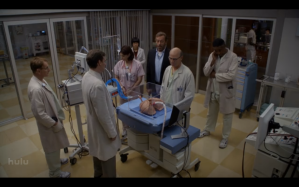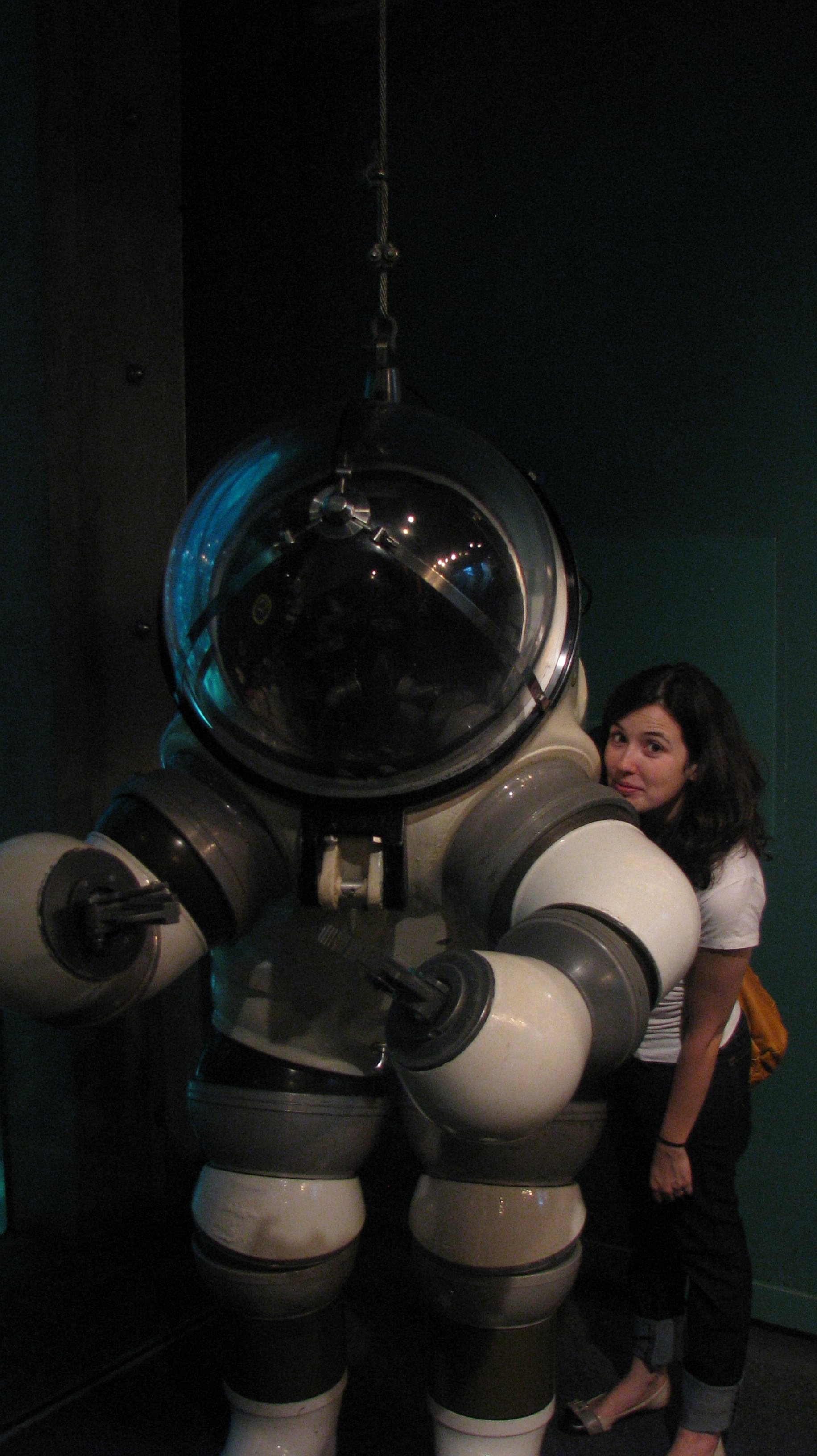I’ve been always irritated at the level of nonsense in House episodes. I still enjoy the writing, the characters, and many great story arcs (like the one where House is in a rehab facility), but can’t avoid suffering through ridiculous diagnoses and stupid tests. In the “Transplant” episode of the new season, I thought they reached a whole new level of absurdity. I couldn’t find an image online, so I captured a screen shot: lungs in a box.
Dr. House is brought to diagnose lungs and treat them before they can be transplanted. The lungs rest quietly inside glass boxes and they have 12+ hours before the next patients dies. Or something. This image made me laugh. In real life, donor organs are prepared and placed in ice bags inside old storage boxes and hauled immediately for transplant. Organs do not last long outside the donor’s body, so they are quickly cooled to slow down metabolism and extend their lifetime. But placed in a glass box? B-movie type science fiction.
When an organ is removed from a donor’s body, circulation stops and the tissues become deprived of oxygen and nutrients. This stage is named “ischemia” and it is the main cause of injury to the organ tissues. The longer the organ stays ischemic, the more extensive the injury will be. To slow down this process, the organ is cooled to hypothermia, which can also cause injuries. After transplant, function is restored and the blood flow restarted in an event named reperfusion – actually the most significant cause of injury.
Ischemia, hypothermia and reperfusion can each trigger a cascade of events. Most importantly, cellular membrane permeability is increased, which contributes to cell swelling due to indiscriminate entry of several molecules. This completely throw off the chemical balance inside a cell, where proteins and enzymes malfunction; intracellular pH decreases; ionic composition of the cell changes (potassium moves out of the cell and sodium floods in); calcium pours in. During reperfusion, oxygen free radicals are generated, causing cellular injury. Phew, how’s that for a chain reaction?
According to Mukjerjee et al, cooling the organ from 37°C to 0°C slows metabolism by a factor of 12. Besides cooling, the organ is also flushed with a preservative solution, to help counteract the injuries mentioned above, and placed in sterile bag filled with crushed ice. Many preservative solutions have been devised, but they mostly contain a cocktail of substances: osmotic agents (to prevent cell swelling), electrolytes (to regulate osmotic effect), metabolic inhibitors (to suppress degradation of cellular proteins), antioxidants (to capture free radicals) and many others. Studies have shown that, in presence of the Euro-Collins preservative solution (high concentration of potassium, phosphate and glucose), organs last longer than in hypothermia alone.
Unlike Dr. House’s lungs, the storage time (in hypothermia) for organ varies is about 5 hours for heart, 40-50 hours for kidneys; 5-15 hours for pancreas and 6-12 hours for liver. In the case of the lung, Mukjerjee states that “the maximum safe interval for the lung to remain ischemic, even when cooled, has not been defined, but 6 hours is the selected limit, and the longest cold ischemic time was 9-10 hours”.
So you can see how crucial it is to get the organs to patients immediately. Due to short time of organ storage, transplant is an urgent procedure. It then becames a logistic problem, where hospital, surgeons, staff and equipment have to be available and ready to go. In the US and in most of the developed world, many hospitals have their own helicopters or private jets equipped to fly to the donor and bring the organs back. In other places, they are not so lucky.
Dr. Silvana Russo (does this name sound familiar? She is my sister), worked as an anesthesiologist in liver and kidney transplants for Hospital de Clinicas in Porto Alegre, Brazil. Dr. Russo believes a lung has to be transplanted within 4 hours of removal, but the actual limits are unknown: everybody tries to do it as urgently as they can. When a donor is found, surgeons and crew are immediately put on call. The time spent between removal and transplantation then depends on variables as mundane and unpredictable as traffic. (Brazilian traffic is now so bad that motorcycle messengers are the norm. Even firefighters and first responders use motorcycles to escape horrible Brazilian traffic).
For example, a transplant group in St Louis has their private jet with a dedicated pilot. However, the situation in Brazil is radically different: the surgeon himself would go to the neighboring town to pick up the organ, and bring it back in a cooler. (Surgeons prefer to fetch and harvest the organ themselves, in order to avoid removal mishaps: other doctors might cut arteries short, making it difficult to place the organ into a new patient). Dr Russo has heard of a case where a donor liver was available in the Amazon (yes, she means the rainforest, more than 4000 miles away from the hospital). The liver was placed in a cooler and flown in via commercial airline, with the surgeon waiting for it in the airport arrivals.
By now we have imagined the scene: lungs in coolers, being rushed in airplanes and motorcycles. So, lungs resting in a box.. Science fiction, right? That’s when I came across this picture online from Science Daily:
Hoax? Reality? Does life imitate art, or even, does life imitate House episodes? I’ll elucidate that question in tomorrow’s post, where I will also show a video (not for the faint of heart) of lungs breathing in a box!
Update: Part II is posted here.





Awesome post! I’m looking forward for the next one! 🙂
Pingback: Lungs in a box – Part II | Exploring: dinosaurs, force fields and quasars.
I haven’t watched House in a while, but I really liked your post, transplantations are fascinating.
Thanks guys! Felipe, if you haven’t watched it in a while, try the new season: it is exactly like the previous ones.. (oh wait..)